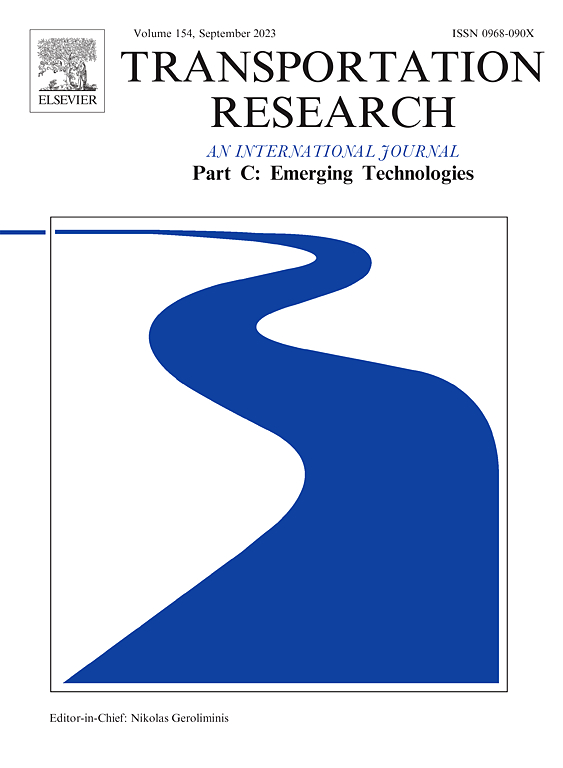Adaptive inference for dynamic passenger route usage patterns in a metro network considering time-varying and heavy-tailed travel times
IF 7.6
1区 工程技术
Q1 TRANSPORTATION SCIENCE & TECHNOLOGY
Transportation Research Part C-Emerging Technologies
Pub Date : 2025-02-01
DOI:10.1016/j.trc.2025.105007
引用次数: 0
Abstract
Due to the dynamic changes in timetables, passenger demand, and passenger composition, the distribution of passengers within a metro system becomes quite complex. Many studies divide a day into intervals to account for the dynamics of travel time. However, the intervals used in these studies are insufficient to capture the gradual and fine-grained changes in passenger travel patterns. This study proposes an adaptive dynamic route inference model (ADRIM) that overcomes these limitations. In the ADRIM, we introduce a constrained Expectation Maximization algorithm (CEM) by confining the parameters of the mixture log-normal distribution model (MLND) within confidence intervals, thereby reducing anomalous estimations. We use the concept of Hidden Markov Models (HMMs) to achieve a parameter-adaptive characterization for the dynamics of route choice and travel time distributions for MLND through an iterative process. For a Nanjing metro case study, the proposed model exhibits superior performance in fitting the actual distribution of travel times and accurately captures the dynamic trends in route travel times. Besides, it is revealed that the maximum difference in expected travel times among multiple valid routes for the same origin–destination (OD) pair primarily falls within the interval [5 min, 15 min], and the distribution range of the maximum ratio is mainly between [1.1, 1.6]. The high consistency in passenger route choice proportions observed for two consecutive weeks, along with an analysis of route choice patterns under dynamic conditions, serves as strong evidence supporting the reliability and practical utility of the dynamic route inference model in understanding and managing metro passenger flows.
求助全文
约1分钟内获得全文
求助全文
来源期刊
CiteScore
15.80
自引率
12.00%
发文量
332
审稿时长
64 days
期刊介绍:
Transportation Research: Part C (TR_C) is dedicated to showcasing high-quality, scholarly research that delves into the development, applications, and implications of transportation systems and emerging technologies. Our focus lies not solely on individual technologies, but rather on their broader implications for the planning, design, operation, control, maintenance, and rehabilitation of transportation systems, services, and components. In essence, the intellectual core of the journal revolves around the transportation aspect rather than the technology itself. We actively encourage the integration of quantitative methods from diverse fields such as operations research, control systems, complex networks, computer science, and artificial intelligence. Join us in exploring the intersection of transportation systems and emerging technologies to drive innovation and progress in the field.

 求助内容:
求助内容: 应助结果提醒方式:
应助结果提醒方式:


